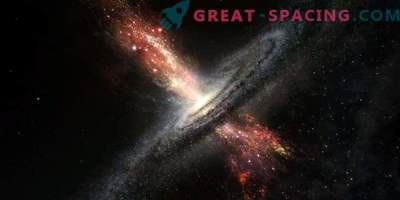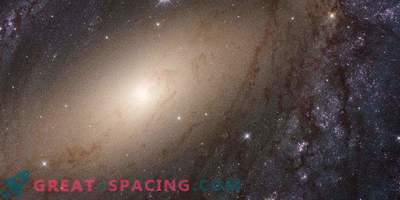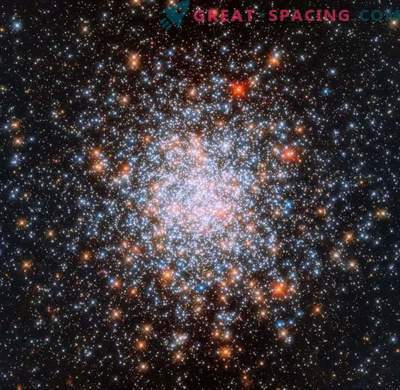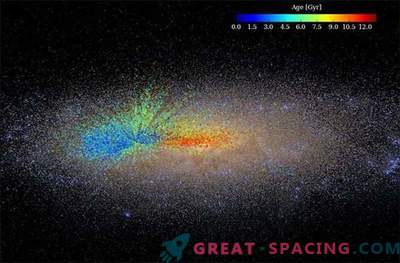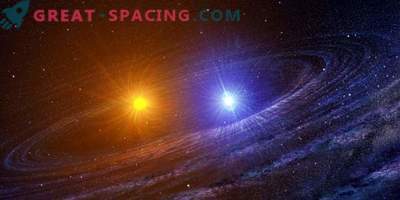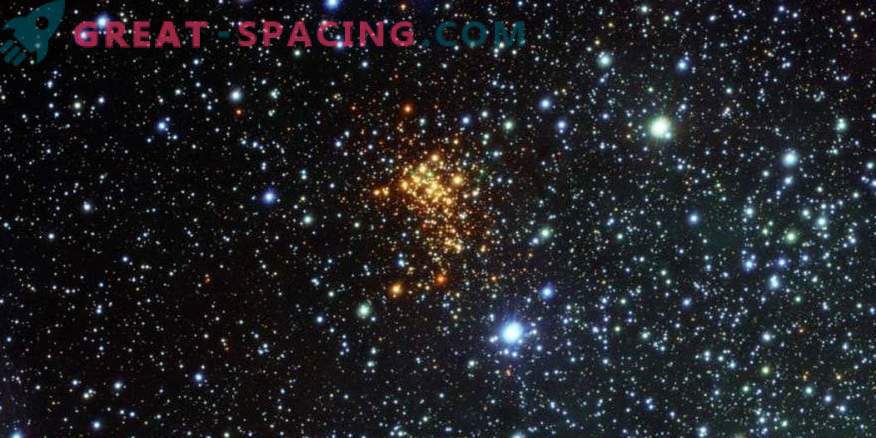
Approximately 25% of young stars in the Milky Way form in clusters where objects are usually located close to each other and can affect gas absorption and growth. Astronomers trying to understand the details of star birth, for example, the relative abundance of massive stars over low-mass ones, should take into account all these effects. It is also difficult to measure the actual demographics of the cluster.
Young stars take root in hidden clouds of natal material. But IR radiation is able to slip away, so scientists probe these areas at IR wavelengths, using the form of the spectral energy distribution (SED - the relative amount of flux emitted at different wavelengths) to diagnose the nature of a young star: its mass, age, accretion activity , disk development and other characteristics.

The area of the grouped star formation. Left: Infrared image of a cluster with high spatial resolution. In the color circles - three young stars, and white marked fiducialnye size. Right: the same cluster on longer waves with a different instrument. Three stars mingle together
One of the main complications is that the instruments used to measure the SED cover different sized beams coming from different objects. As a result, each obtained point represents a mixed mixture of radiation of all the constituent stars with the longest points of the wavelength. Therefore, astronomers decided to create a new method of statistical analysis to solve the problem of SED entanglement in clusters. Using the highest resolution images for each area, scientists identify distinguishable stars and their radiation at these wavelengths. They combine a Bayesian statistical approach with a large grid of modeled young stellar SEDs to determine the most likely continuation of each SED in mixed long-wavelength ranges. Thus, it is possible to derive the most likely mass and age values for each star, as well as environmental parameters. This is not a unique calculation, but still remains the most likely solution.
Researchers apply the method to 70 low-mass young star clusters observed with an IR camera on the Spitzer space telescope, and obtain physical parameters. These results are in excellent agreement with overall expectations for the distribution of stellar masses.
